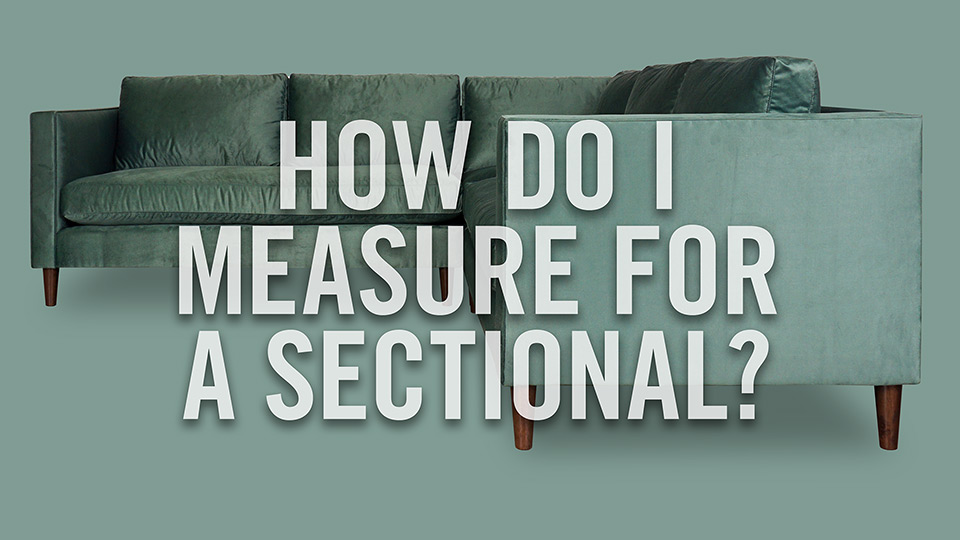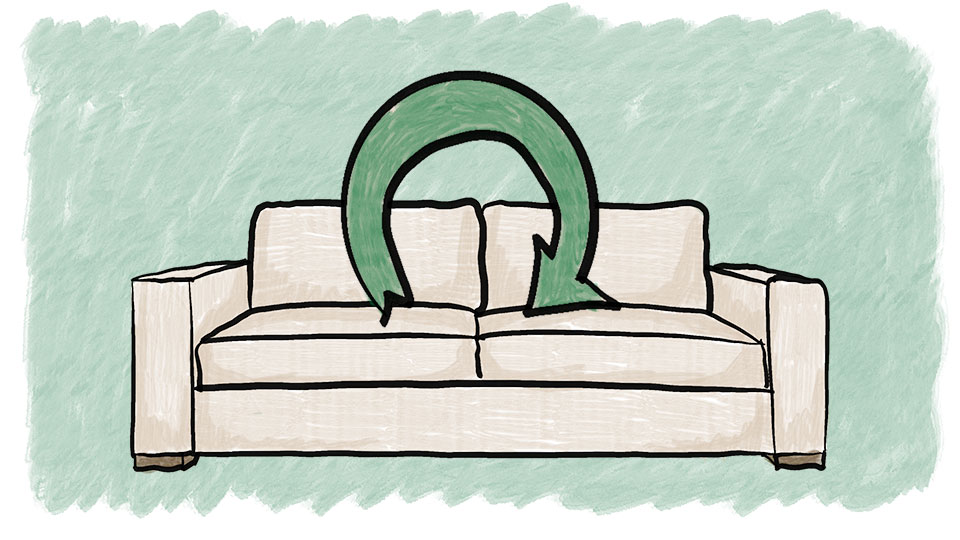Questions & Answers
Candid answers to your questions about furniture and design.
View All Questions
What do I do with all these leather swatches?
Hi, there, I'm Chris from Roger and Chris. I'm here today to answer an important question. What do I do with all these leather swatches that just showed up in the mail?
All right, so, I assume that you've been to our website, you've contacted us regarding requesting some leather swatches. Awesome, glad you did. Now you got some leather swatches sittin' on your coffee table and you're tryin' to figure out what to do with them. I think there are a couple of things that you are going to want to do to get a sense of which of these leathers is really gonna be the right one for my furniture.
The first thing you really wanna focus on, of course, is color, pretty straight-forward. But there's a little bit of subtlety to that, and you need to consider. Leather is, it's complex product, it's a natural product. So you're gonna have variations in color in many cases on the hides that we work with. The more natural the leather is, the less uniform it is in color, the more you can anticipate variations in tone and hue across the hide. For example, the center of the hide tends to be a little bit lighter than the corners of the hide. So depending on where the various pieces of your sofa are cut from on that hide, because we get these, I mean, hides don't, they're cow hides, they don't come in squares, they come in these crazy shapes, and they have little things that you have to cut around, and you have to... Think about making sugar cookies with a cookie cutter. It's like that. You have to kind of play this game of figuring out how do I get these pieces of leather cut out. So, as a result, you're gonna have different pieces of leather cut from different places on the hide. And hence, you will have variations in color.
So though the swatch that you have is trustworthy, but it tells part of the story. Keep in mind that you might have sections that are lighter in color, you might have sections that are darker in color. More common, with the more protected leathers, they'll be more uniform, so you don't have to worry about that quite as much. If you're confused about that, or if you don't know which category the leathers that you're considering fall into, let us know. We'll be happy to give you some examples, explain that for you, maybe send you some photos that represent how that might look as a finished product. But the color should still be pretty true, so look at it in the room that the sofa's gonna be going into. Consider the light, the color of the light that's coming into the room. The color of the light will vary from time to time in the day. You know, some times of the day, you're gonna get warmer light, some times it'll be cooler. The color of the walls, will inform, to some degree, how that leather is represented, the color representation of it. Because you have light bouncing off walls, and ceilings and floors, and that picks up a cast, and kind of tweaks the coloring a little bit. So, you know, it's never perfect, but I do think that you're best off looking at in the environment it's gonna go into. That's a good, kind of, starting point.
We need to consider texture. Now, texture with leather, again, is a little bit complicated, because when you look at a cutting, again, one part of the hide might be smoother, and another part of the hide might have a little bit more grain to it. That's not that big of an issue. Usually it's not too big of a difference. What can become an issue though, is that once that leather is actually stretched and upholstered on to a piece of furniture, a lot of the grain that you see starts to pull out. It doesn't go away, but if you're looking at your swatch, and thinking, gosh, this is just a little bit too pebbly for me, you're gonna lose a little bit of that, once we actually start working that leather, and start pulling it, pulling it taut across the frame. Some of that will be reduced to a degree. I think that it's a little tricky to visualize. I think sometimes people get more concerned about pebbling and grain than they necessarily need to be, because in the end it doesn't make a huge, huge difference. But I still want you to be comfortable with it.
You're gonna wanna look at the sheen to the leather as well. Some are gonna be quite shiny, some are gonna be more flat. The wax-coated leathers, the natural analine leathers that have that wax topping on them, are obviously gonna be, generally, the shinier ones. Some leathers that we work with are almost like patent leather, they're so shiny. Others are gonna be super flat. They almost look like they're coated in a little fine layer of dust. And, you know, it's just gonna depend on your preferences, but I don't want you to go into situation thinking, well, gosh, I want an amber colored leather, well, it has to be this kind of finish. Not necessarily, but definitely take a look at that. Again, stretch the leather swatches a little bit, it'll kind of give you a sense of three of those things. The color variation will kind of burst up a little bit, you'll see some lighter colors come to the surface. You'll see that texture kind of stretch out a little bit, and you'll kind of get a better sense of what the sheen of the finished product would be.
From a practicality, durability perspective, I say, hey, go for it. Definitely get a sense of how scratchable the leather might be. Run your fingernail across it, run your keys across it. It's gonna be helpful for you to understand, okay, if I plop down on the sofa, or if my dog jumps up on it, or if my kids try to scratch their name into the back pillows, which has happened to someone before, are you gonna be comfortable with that? Is that something that you're okay with? I think a classic leather sofa that picks up those sort of scuffs and patina and all of that over time, I think that can be beautiful. I personally like that. It's not for everybody, though. So, I wanna make sure that it's gonna work for you. Now if you get a protected leather, and you start scratchin' it, you'll see, it like, it doesn't really do much. It should be pretty inert, in which case, good to go. And then, stain protection is a kind of final criteria that you need to consider. The more protected performance leathers, of course, are gonna be better with stain resistance, water resistance. Drop some water on the leather. See if it soaks right in and leaves a little dark circle, and never really goes away, or it just beads up, and you can just wipe it off. It's gonna be one or the other, generally speaking. The time it takes to absorb, it might vary. Some of the wax-coated leathers will give you a little bit of a, they'll give you a bit of a buffer zone, where you can clean that up before it starts to soak in. The really protected leathers, it's pretty much just gonna sit there and wait for you to wipe it up. And then, as far as actual staining, it's kind of the same deal. We're really concerned with what absorbs into the crust. If you don't have that absorption, you're generally gonna be fine. Some leathers are gonna be better, also, working with cleaning products. Household cleaners can, household cleaners can destroy leather, they can bleach it out. If you aren't using the right product, it can be really, really damaging to the coloring and finish of it, so you have to be very careful about what you use. Again, check with us. We can always verify with the tanneries.
There are protected leathers that will be, again, far more resistant to showing any sort of damages or results of that, that let you spray, you know, 409 or whatever on it, and it's not gonna cause problems. And there are also some leathers out there, that are more traditional in look, but they have Krypton coating on them, like Krypton fabric coating, and it's gonna give you that same stain resistance, and resistance to cleaning products. So, all good. We'll also have a video that talks about some of the different leather cleaning products that are out there, and where to go for that, because I think that's an important thing to know about too.





